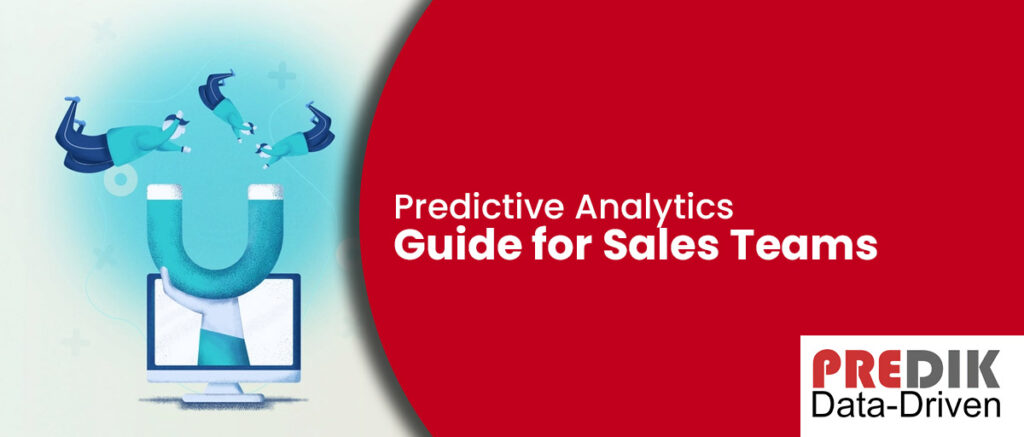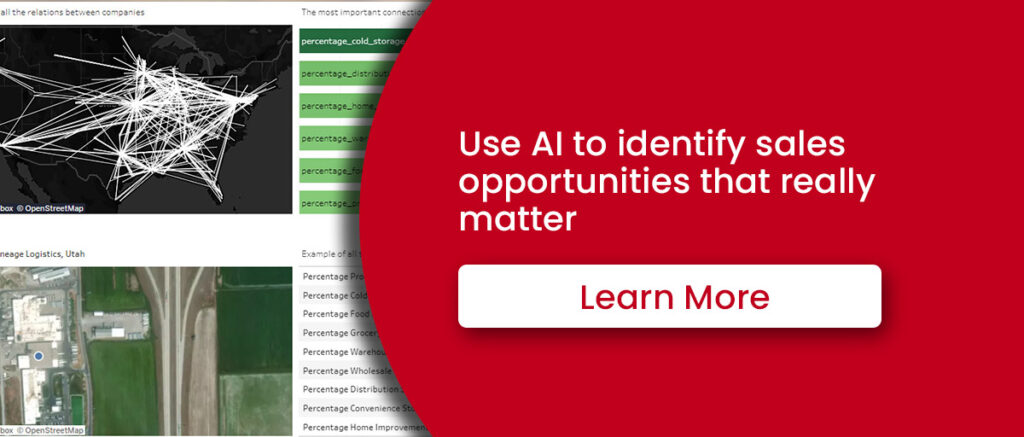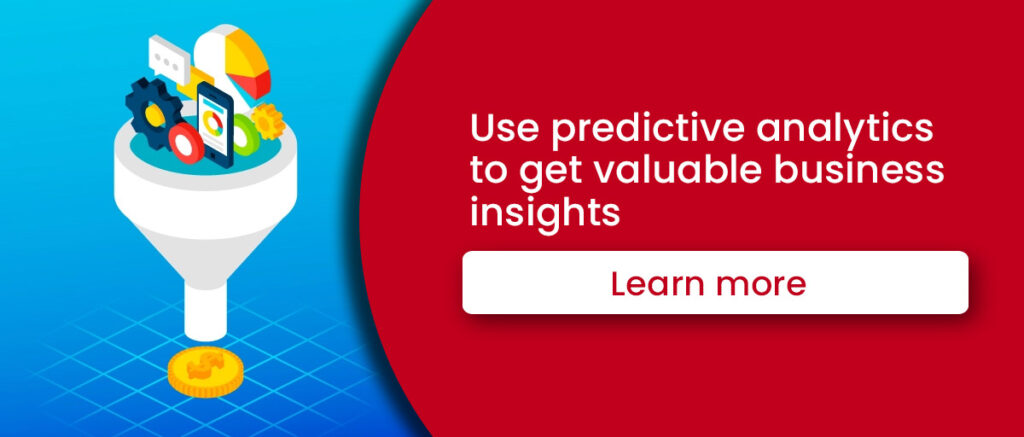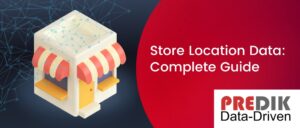Imagine if your sales team could be one step ahead of what your customers and prospects demand. How great would it be to look into your target market’s future needs, desires, and preferences even before your competitors?
According to a recent survey by HubSpot, over 1,000 sales professionals found that standing out from the competition was the most common issue, with 26% of respondents stating this as a major concern.
There is something clear: Data beats solely instinct. That is why, even though it is impossible to know the future with 100% accuracy, predictive data analytics can give you a solid view of your customers, prospects, and the market will change.
So, why is Predictive Analytics relevant for sales?
Predictive sales analytics involves the use of Machine Learning, Big Data, and IA to gather historical and current internal data to identify users’ patterns and trends and estimate future outcomes.
Imagine you are expanding your business to new cities, and you are planning to open several stores in strategic places. How can you know if the strategy will bring the expected results?
Well, a predictive model will analyze the sales performance of your current stores to identify the key elements that separate the successful locations from the underperforming ones. Having this information, the model can indicate which sites will succeed and which ones will not.
The key is adding other sources of information like foot traffic, POIs, web scraping, social media, app analysis, or in-store behavior to have a complete vision of action.
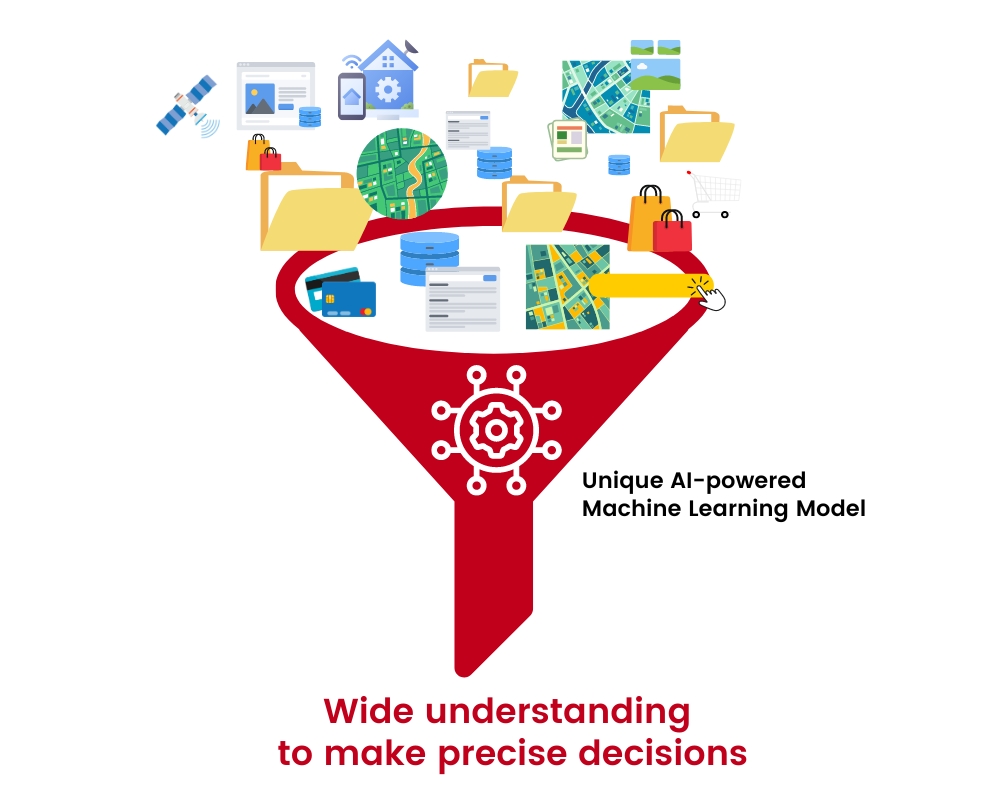
Get a personalized consultancy with our data experts.: Learn more about our Predictive Analytics Solutions
Sales forecasting
Sales forecasting can be challenging due to the reliance on subjective information. Often, sales professionals lack the necessary data to make informed predictions about future sales.
This limited information can lead to inaccurate estimates, creating further sales challenges. For instance, if a sales team needs to report revenue growth, they may provide an estimate different from what objective data suggests.
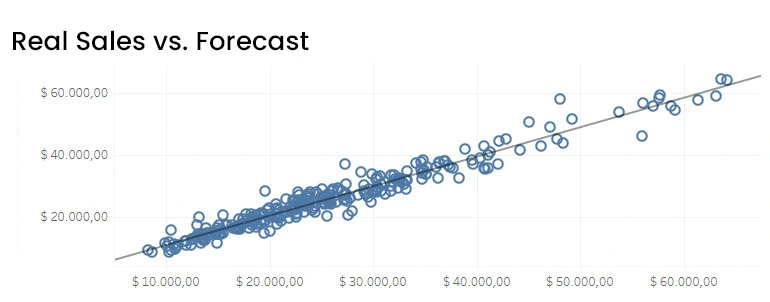
Having accurate and reliable historical and current sales data, predictive models can provide more precise sales forecasts considering unexpected changes, threats, and opportunities. How? As we mentioned, good predictive insights combine internal data with relevant market and customer information.
Finding new (good) customers
There is always a client that buys a good amount of product, pays on time, and makes several purchases over the year. Surely, most sales professionals break their heads trying to find more of these accounts.
“Four of every ten salespeople say that connecting with potential customers/booking meetings with potential customers is one of their main challenges.”
Vidyard, The State of Selling and Virtual Selling Report
Sales predictive insights can help with this. In fact, at PREDIK Data-Driven, we have developed a Sales Intelligence solution that analyzes your best clients and finds similar profiles to prospect.
Our solution based its accuracy on predictive modeling, Machine Learning, Big Data, and AI.
Allocating sales efforts (Lead scoring)
A few months ago, a client came up with an exciting challenge… How should I allocate my sales team so they can visit all my clients nationwide?
A bit of context. The agroindustrial company noticed that their sales teams wasted time and opportunities visiting all their clients. They were looking for a predictive model that could tell them:
- Which clients are worth visiting, and how to assign them to the sales team?
- What is the ideal number of salespeople to provide a proper follow-up to clients?
The model offered an intriguing insight: Having a sales team comprising 20 or more individuals is not beneficial. In reality, having more than 25 sales representatives results in higher expenses than profits.
Selling more to recurring customers
Predictive analytics is not only about getting new customers but upselling and cross-selling to recurrent ones.
Predictive models can help sales teams understand what else users might buy based on their preferences and purchase intent. This information can highlight underserved necessities that must be covered to maximize LCV and gain market share.
We recommend you reading: Predictive Analytics In Retail: How It Works? (5 Big Benefits + Use Case)
Better promotional strategies
Regardless of the industry, discounts and special offers will always be essential for sales teams. The problem is that “generic” efforts will not yield the expected results.
“Results show that 70% of companies that use advanced personalization have already earned 200% ROI or more from it.”
IBM
In an era where consumers seek brand personalization, predictive models can improve segmented promotional strategies based on how users respond to past pricing strategies, deals, discounts, and special offers.
You might also find interesting: Consumer Insights: Understand Your Customers With Big Data
The importance of having the correct data and model
To generate significant insights, having meaningful and reliable data is crucial. Remember, a good predictive model uses historical, current, external, and alternative data.
Also, the model should be based on a clear objective and follow a specific process to avoid bias or mistakes that could lead to incorrect information.
We know that developing a solid predictive analytics approach can be challenging. If your company wants to get the best out of data, we can help at PREDIK Data-Driven. Right now, leading worldwide brands are using our specialized and personalized methodology.

